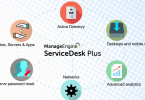In today’s rapidly evolving digital landscape, the value IT professionals bring to an organization can often be obscured by the complexity of the technology itself. For you, an IT professional, articulating your contributions in a manner that resonates with non-technical stakeholders is not just beneficial—it’s essential. Translating the intricacies of technology into the universal language of business benefits ensures your work is acknowledged, supported, and funded.

Simplify to Amplify
The first step to effective communication is to explain technical concepts using everyday examples and analogies. Imagine you’re explaining how a complex multi-layered security system works. You could compare it to a multi-tiered security protocol in a high-security building, where visitors must pass through several clearances before accessing sensitive areas. This approach makes the abstract and often obscure elements of IT more tangible and relatable, allowing stakeholders to grasp the importance and necessity of certain IT functions without getting bogged down by the underlying technicalities.
Enhancing Your IT Skills
Consider earning an online degree in cybersecurity to further enhance your ability to contribute meaningfully to your organization. These programs are crafted to deepen your understanding of how to protect business computers and network systems, and this could be the ticket to advancing your career. The flexibility of online learning allows you to progress at your own pace and continue working, acquiring new skills that make you an invaluable asset to your team.
Focus on the Big Picture
When discussing IT projects, it’s crucial to minimize the use of technical jargon. If you must use specific terms, ensure they are clearly explained. More importantly, shift the focus from the nitty-gritty of the technical processes to the outcomes and benefits these projects bring. For instance, rather than detailing the coding process of a new software, emphasize how this software will improve productivity, enhance customer satisfaction, or reduce operational costs. This shift in focus from process to outcomes helps stakeholders see the value of IT investments in business growth and efficiency.
Visual Tools for Better Understanding
Diagrams, flowcharts, and infographics can transform the perception of technical processes. These visual tools act as translators, turning complex IT workflows into understandable and engaging content. A well-designed infographic can depict data flow through a system, highlighting how specific technologies play pivotal roles in safeguarding information or optimizing operations. By presenting information visually, you cater to diverse learning styles, making it easier for everyone to understand what might otherwise require lengthy explanations at a glance.
Aligning Tech with Business Goals
It’s imperative to explain why certain technical decisions are made and how they align with broader business objectives. When you propose upgrading network security, discuss how this aligns with the business’s goal of ensuring customer data privacy and trust. Stakeholders are more likely to support initiatives that contribute to overarching business strategies, demonstrating the functionality of a technology and its strategic value.
Real-World Success Stories
Sharing real-life examples or case studies that illustrate the successful application of technology in similar contexts can be incredibly persuasive. These stories provide concrete evidence of technology’s potential impact, offering a blueprint for success that stakeholders can easily relate to and understand. Demonstrating how similar organizations have benefited from specific IT solutions reinforces the relevance and urgency of adopting these technologies in your operations.
Encouraging Open Dialogue

Creating an environment where questions are encouraged and thoroughly answered is vital for bridging the communication gap between IT and other business units. Encourage stakeholders to engage with you, ask questions, and express concerns. This openness demystifies IT and fosters a culture of collaboration and mutual understanding, which is essential for successfully integrating IT solutions into business operations.
Effective communication is the bridge that connects technical expertise to business success. As an IT professional, your ability to articulate the relevance and benefits of your work in accessible terms can significantly influence your career trajectory and the strategic direction of your organization. By employing these strategies, you ensure that your contributions are recognized, understood, and valued across all levels of your organization.





Leave a Comment